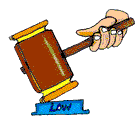US Government History
There were actually two different Constitutions, the first in 1776 and the one we use today was written in 1790, with the Bill of Rights added a year later.
 When the colonists arrived in what we call today the Untied States, they built and established colonies, from these colonies the first thirteen states were established. Most of these states pretty much ran themselves by their own governments; however, they were still had to answer to England and her laws. Each state varied their relationship with England, and as time went on, these states and the people did not like being told what to do by England. They risked their lives to get away from England, and they felt they should become independent from her long reach. This feeling was shared by all thirteen states and this is what led to the ware for independence.
When the colonists arrived in what we call today the Untied States, they built and established colonies, from these colonies the first thirteen states were established. Most of these states pretty much ran themselves by their own governments; however, they were still had to answer to England and her laws. Each state varied their relationship with England, and as time went on, these states and the people did not like being told what to do by England. They risked their lives to get away from England, and they felt they should become independent from her long reach. This feeling was shared by all thirteen states and this is what led to the ware for independence.
Their declaration of independence was issued in 1776, but actual independence was not won until 1781. Even before their independence was declared, each state had a group of men to meet and address issues of national concerns. This was the very first Continental Congress and their first meeting was in Philadelphia on September 5, 1774.
Even though the Continental Congress had national representation, they did not have the authority to make binding laws. Their job was to raise armies and conduct diplomacy and they did this until 1781. By the time the first Declaration of Independence was adopted, there had been discussion in the Continental Congress concerning the adoption of a constitution to formally recognize a confederacy of the thirteen colonies.
On June 7, 1776 it was declared that the United Colonies were free and independent states and they absolved themselves from all allegiance to the British Crown. On July 4, 1776 the Declaration of Independence, which was mostly written by Thomas Jefferson, was adopted. In 1781, the Continental Congress was disbanded and replaced by the Confederation of Congress, which had much more authority than their predecessors, and became the most powerful political entities. In the same year, the colonies adopted the Articles of Confederation and Perpetual Union. It was proclaimed in the Articles that each state retains its sovereignty, freedom, and independence, and every power, jurisdiction and right, which is not expressly delegated to the United States.
Politically, the United States was a loose union of independent states and members of the Congress were little more than ambassadors representing their states. As stated in the Articles, the states entered into a “firm league of friendship.” This “league” however, did not take long to prove itself unworkable. This was because the states were so far apart from each other, and transportation between the states took so long to get from one to the other, information would everywhere and secrets could not be kept.
The national government was responsible for negotiation treaties with foreign governments, when it came to the states however; the national government was subservient financially. It did not have the authority to raise revenues directly from its citizens. The Articles provided that the states were to make contributions to the national treasury but the national government did not have the authority to actually make the states pay.
As a result, the national government suffered financial difficulties because of the lack of funds. Under the Articles of Confederation, the nation was fragmented and the national government too weak to solve its problems. After a few years of not getting any better, the decision to abolish the Articles and make a new constitution was decided. To preserve the integrity of the processes, they agreed to keep their proceedings secret until it was finished.
A new governmental structure was created in the new constitution. It gave our government more power, but the power was governed by what was in the Constitution. The federal government has continued to grow in size and power under this Constitution. However, it is still governed by what was written by our forefathers over two hundred years ago.